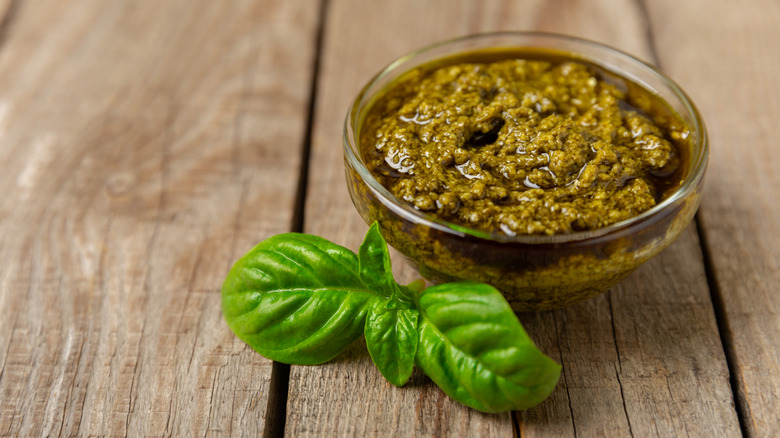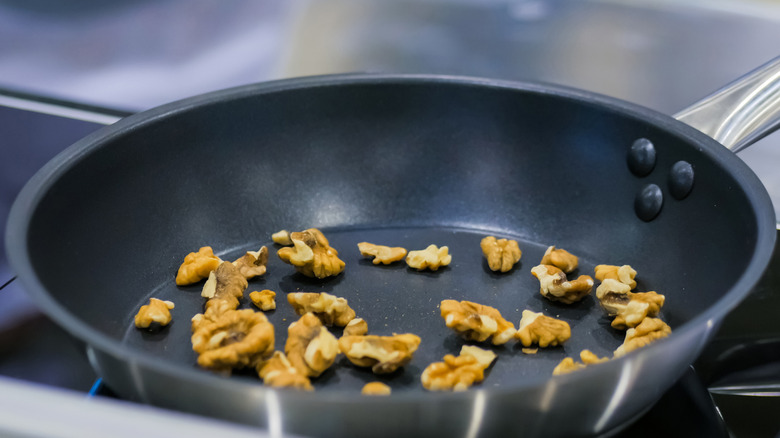The Best Nuts To Try In Pesto, Hands Down
If you've got a batch of pesto in your fridge, you've got lots of meal possibilities. Pasta is the obvious choice, but you can also slather some of the green stuff on slices of sourdough for a snack, or stuff a spoonful into a chicken breast or pork chop for an unexpected main dish. In fact the only downside to traditional Genoese pesto is the price, which is directly related to the cost of the production of pine nuts. There's a cheat code to making affordable pesto, however: Less expensive nuts and seeds work just as well. For a few suggestions on some alternative nuts to try with pesto, Daily Meal talked to Makenna Held, the CEO of RecipeKick and The Courageous Cooking School. Turns out, you probably have a couple of good options in your pantry right now.
"Most nuts are great for pesto," says Held, adding that their favorites are walnuts and green pumpkin seeds, which are sometimes sold as pepitas. "Pepitas are my go to, because they roast beautifully, blend nicely, and have a rich nuttiness without bitterness."
As for pine nuts, she saves the pricey pieces for recipes where they're the star of the show. "I love pine nuts, but in this economy? I use them whole roasted in other dishes, and not in my pestos!" Says Held.
Roast nuts and seeds for pesto
No matter which nut you choose for making pesto, the most important step is making sure they're lightly roasted before you grind them into the sauce. Not only will this give your pesto more flavor, it will help with the texture.
Makenna Held, who is also the steward of Julia Child's former vacation home, La Peetch, in Châteauneuf, France, recommends a quick roast on the stovetop. "A dry roast in a frying pan is crucial as it pre-cooks your nuts and adds a deep flavor to your final sauce and gives the nuts some integrity," said Held. In addition to adding roasted, caramelized flavor from the maillard reaction, the roasting process also lowers the moisture in the nuts or seeds, which gives roasted nuts their crunchy texture and makes a big difference in the consistency of the finished pesto. "If you don't do a roast, you'll end up with a gummy, oily mess," said Held.
So if you're hankering for pesto, don't be afraid to pass on the pine nuts. Those tiny seeds come from very specific varieties of pine trees, and require a ton of time and labor to harvest, which is why they command a high price. More affordable options work just as well as long as you toast them, which means you'll have a few extra bucks leftover to spend on olive oil, which is going up in price.

